Oedematopus is a genus of flies in family Dolichopodidae.
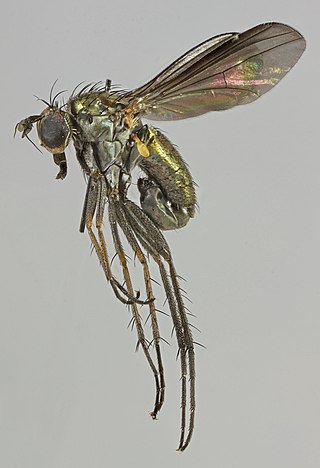
Hercostomus is a genus of flies in the family Dolichopodidae. It is a large genus, containing more than 483 species worldwide. Multiple studies have shown that Hercostomus is a polyphyletic assemblage of species.
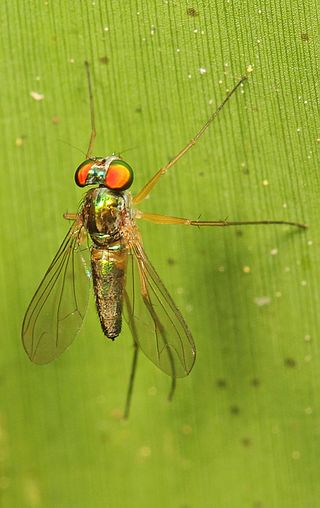
Amblypsilopus is a genus of flies in the family Dolichopodidae. It is a large genus, with about 350 species recorded. However, it is possibly polyphyletic.
Anasyntormon is a genus of flies in the family Dolichopodidae. It was originally placed in the subfamily Rhaphiinae near Syntormon. It was transferred to Dolichopodinae by Hans Ulrich (1980), who found it to be congeneric or closely related to Hercostomus.
Argyrochlamys is a genus of flies in the family Dolichopodidae. It is known from the Afrotropics, the Oriental realm, and the southernmost part of the Palearctic realm.
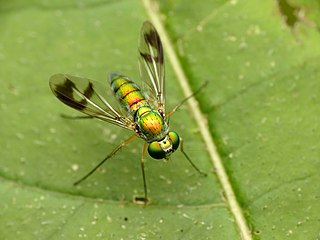
Condylostylus is a genus of flies in the family Dolichopodidae. It is the second largest genus in the subfamily Sciapodinae, with more 250 species included. It has a high diversity in the Neotropical realm, where 70% of the species occur.
Metaparaclius is a genus of flies in the family Dolichopodidae. It is known from Papua New Guinea and Australia. The systematic position and monophyly of the genus are currently ambiguous: the holotype specimen of the type species, Metaparaclius subapicalis, was deposited in the Hungarian Natural History Museum, which was destroyed during the Hungarian Revolution of 1956, and no other specimens of this species are currently known.
Muscidideicus is a genus of flies in the family Dolichopodidae. It contains a single species, Muscidideicus praetextatus, which is found only in the Western Palaearctic.
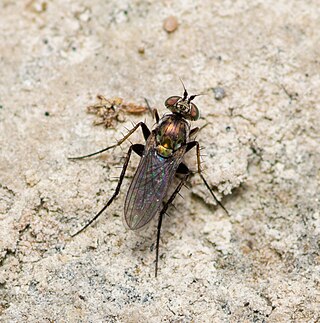
Paraclius is a genus of flies in the family Dolichopodidae.
Pelastoneurus is a genus of flies in the family Dolichopodidae.

Rhaphium is a genus of flies in the family Dolichopodidae. It is the largest genus within the subfamily Rhaphiinae, with over 200 species currently known.
Saccopheronta is a genus of flies in the family Dolichopodidae. It is considered a synonym of Medetera by some authors, and a valid genus by others.

Tachytrechus is a genus of long-legged flies in the family Dolichopodidae.
Vetimicrotes is a genus of flies in the family Dolichopodidae. It is distributed in the Palaearctic realm. The genus was originally named Microtes by Theodor Becker in 1918. Afterwards, the name was found to be preoccupied by the grasshopper genus Microtes, so it was renamed to Vetimicrotes by C. E. Dyte in 1980.

Hydrophorinae is a subfamily of flies in the family Dolichopodidae. Several studies have found evidence that the subfamily in its current sense is polyphyletic.

Dolichopodinae is a subfamily of flies in the family Dolichopodidae.
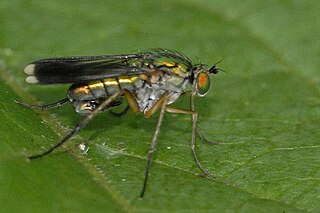
Poecilobothrus is a genus of flies in the family Dolichopodidae.
Medeterella is a genus of flies in the family Dolichopodidae. It contains nine species formerly included in Medetera in the M. salomonis species group. The species are found in the Afrotropical, Oriental and Australasian regions. According to Naglis and Bickel (2012), it was unwarranted to establish a separate genus for this group of species.








